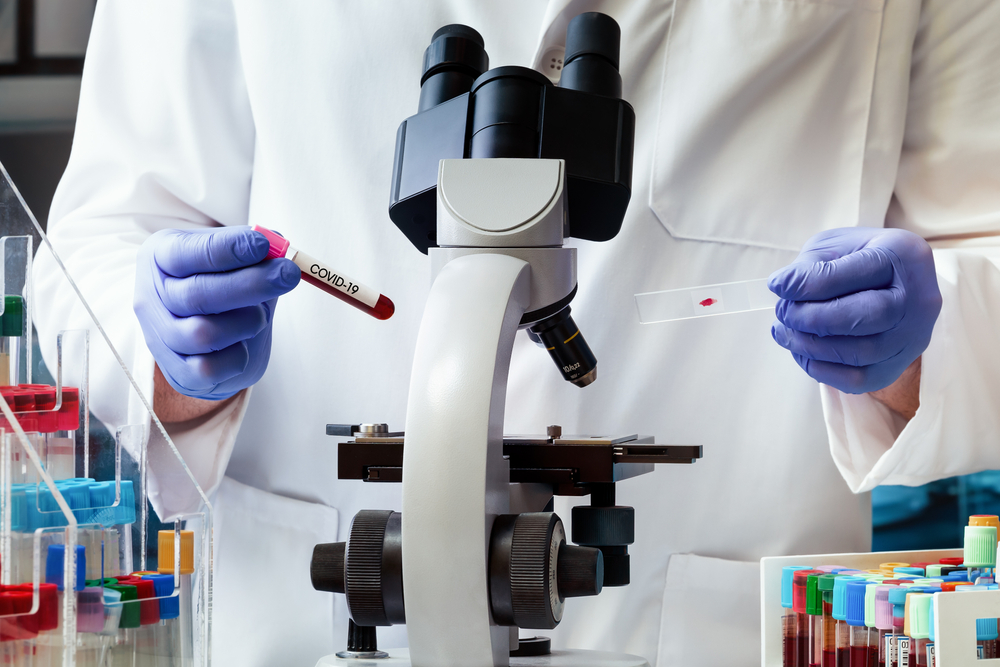
Principles of Immunoassays
Written by: UK NEQAS IIA, published on: 12 Jul 2024

Immunoassays are bioanalytical methods used to quantify substances by measuring the reaction between an antigen and an antibody. They primarily operate through a competitive binding process, where a fixed amount of labelled analyte competes with varying amounts of unlabelled sample analyte for a finite number of binding sites on a specific anti-analyte antibody.
In this article, we discuss the principles of immunoassays in more depth, and explore the different types.
Why are Immunoassays important?
Immunoassays have been used in many important areas, including:
- Diagnosis of diseases
- Therapeutic drug monitoring
- Clinical studies in drug discovery
The widespread use of immunoassay methods in pharmaceutical analysis are due to their inherent specificity, high-throughput capability, and high sensitivity. These characteristics allow for the analysis of a wide range of analytes in biological samples.
Immunoassays can detect antigens at extremely low concentrations, which other techniques cannot measure. Their speed allows clinicians to diagnose diseases quickly and accurately.
Historical Background and Evolution of Immunoassays
Rosalyn Sussman Yalow and Solomon Berson are credited with the development of the first immunoassays in the 1950s. Their work resulted in a Nobel Prize in Medicine in 1977. Since then, immunoassays have evolved greatly.
In the 1980s, a professor at Cardiff University replaced the radioactive iodine used in immunoassays with an acridinium ester, a substance that produces its own light through chemiluminescence. This type of immunoassay is now used in approximately 100 million clinical tests annually worldwide, enabling clinicians to measure a range of proteins, pathogens, and other analytes in blood samples.
Basic Principles of Immunoassays
The core principle of immunoassays is the use of an antibody that specifically binds to the target antigen. The antibodies that are used in the immunoassay must have a high affinity for the antigen, and they can be either monoclonal or polyclonal antibodies.
Monoclonal antibodies only bind to specific antigens and therefore give more accurate results, but can be more expensive. Polyclonal, on the other hand, are less expensive but can recognise multiple epitopes on an antigen or multiple antigens, so are less specific.
Another key feature of all immunoassays is the ability to produce a measurable signal in response to the antigen-antibody binding. Most immunoassays achieve this by chemically linking antibodies or antigens to a detectable label. Various labels are used in modern immunoassays, enabling detection through different methods.
Types of Immunoassays
The main types of immunoassays generally used are:
Turbidimetry and Nephelometry Immunoassays
Turbidimetric immunoassay, also known as immunoturbidimetry or turbidimetry, measures the turbidity of a sample to determine the level of an analyte. This method is often used to quantify antigen-antibody complexes, as their formation increases the sample's turbidity. When light passes through the reaction solution, some of it is scattered by the sample, some is absorbed, and the rest passes through. The concentration of protein antigen in the sample is determined by measuring the light absorbance.
Nephelometric immunoassay is a method related to immunoturbidimetry and is also used to quantify antigen-antibody complexes by measuring the sample's turbidity. However, nephelometry measures turbidity by detecting light scattered at a fixed angle.
Enzyme Immunoassays (EIA)
Enzyme immunoassays, including ELISAs, are straightforward, and widely used examinations based on specific interactions between antibodies and antigens. They harness the catalytic abilities of enzymes present in a sample to identify and measure immunological responses accurately.
ELISAs represent a distinct category within enzyme immunoassays, used for clinical analyses. Their purpose is to precisely identify and measure antibodies, proteins, and hormones.
Radio Immunoassays (RIA)
A radioimmunoassay (RIA) employs antigens labelled with radioisotopes to gauge the concentrations of substances in bodily fluids like blood and saliva. RIA's are sensitive and specific, and often used to detect a single analyte in samples. However, it's important to use extra precautions due to the radioactive substances involved.
Fluoroimmunoassay (FIA)
Fluorescent immunoassays (FIA) employ a fluorescent compound as the detection reagent for detecting and quantifying various compounds. Widely utilised in the in vitro diagnostics (IVD) sector, FIAs offer rapid detection and high sensitivity, surpassing many alternative methods.
Chemiluminescent Immunoassay (CLIA)
Chemiluminescence immunoassays are a type of enzyme immunoassay. While the principles of CLIA are similar to those of ELISA or fluoroimmunoassay, the type of reporter used is different. CLIA reporter systems rely on chemiluminescence, which is the emission of light resulting from a specific chemical reaction. CLIA has a fast reaction time, and is highly stable compared to FIA and RIA. Therefore, CLIA is used in a range of different fields including disease diagnosis, food safety and environmental monitoring.
EQA and Immunoassays
We've explored the principles of immunoassays and their significance in helping diagnose diseases efficiently. EQA plays a crucial role in maintaining and improving the quality of immunoassay testing. It ensures that laboratories produce reliable, accurate, and standardised results, which are essential for effective patient care and research outcomes.
For further insights, explore a variety of topics through our Digital Academy, featuring webinars, videos, publications, and more. Sign up today, and register for free to gain access.

